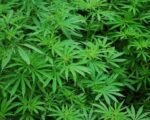Airflow mapping is the process of measuring and analyzing how air moves through a cannabis cultivation facility. Whether it’s an indoor grow room or a greenhouse, airflow plays a major role in plant health, pest resistance, and disease prevention. By visualizing how air circulates, growers can identify dead zones, hot spots, and areas prone to excessive humidity—common culprits behind powdery mildew (PM) outbreaks.
Traditionally, growers used smoke bombs to trace airflow visually, but modern tools have made this process more precise. Hotwire anemometers are now the go-to for measuring airflow speed and direction, while infrared thermometers help assess leaf surface temperatures. Some advanced operations rely on computational fluid dynamics (CFD) to digitally simulate airflow patterns before building out a facility.
Even if airflow mapping wasn’t done before construction, it’s never too late to assess and optimize air circulation. By strategically placing fans, vents, and dehumidifiers, growers can maintain consistent airflow, reducing the risk of mold and uneven plant growth.
Why Airflow Matters for Plant Health
Good airflow is more than just a way to keep plants cool. It’s essential for CO2 delivery, temperature control, and humidity management. Without proper circulation, plants can suffer from stunted growth, weak stems, and increased disease susceptibility. Here’s why airflow is critical:
- CO2 Distribution: Cannabis needs CO2 for photosynthesis, and airflow ensures plants receive an adequate supply. Stagnant air can lead to uneven CO2 levels, causing some plants to thrive while others struggle.
- Temperature Regulation: Hot spots in a grow room can lead to uneven growth, stressing plants in certain areas while others remain in optimal conditions.
- Disease Prevention: High humidity and stagnant air create ideal conditions for powdery mildew, botrytis (bud rot), and other fungal infections. Air circulation helps dry excess moisture on leaves, making it harder for mold spores to take hold.
- Structural Strength: Plants exposed to a consistent breeze develop stronger cell walls and thicker stems. This improves resistance to pests and supports better nutrient and water transport.
Too much airflow, however, can be just as harmful as too little. Excessive air movement increases transpiration, which can cause plants to absorb too much water and nutrients, leading to deficiencies or toxicities. Balancing airflow to maintain the right growing conditions is key.

How to Map Airflow in a Grow Room
There are several practical ways to measure and adjust airflow in an indoor cannabis facility. Whether you’re using basic observation methods or high-tech solutions, the goal is to identify any airflow imbalances and make necessary corrections.
Simple Techniques:
- Smoke Tests: Using smoke or vapor can provide a quick visual representation of airflow patterns in a grow space.
- Ribbon or String Test: Hanging lightweight ribbons in different areas of the room helps indicate airflow direction and intensity.
- Leaf Movement Observation: Plants should gently sway but not be aggressively buffeted by airflow.
Advanced Tools:
- Anemometers: These devices measure air velocity, helping determine whether airflow is consistent throughout the grow area.
- Infrared Thermometers: Used to assess leaf surface temperatures and identify areas where plants may be overheating due to poor circulation.
- CFD Modeling: Digital simulations predict how air moves within a facility, allowing growers to make design adjustments before implementation.
Once airflow issues are identified, adjustments can be made by repositioning oscillating fans, increasing air exchange rates, or using ducting systems to redirect airflow where needed.
Evaporative Cooling Pads: When and Why to Use Them
Evaporative cooling pads are an effective way to regulate temperature and humidity in grow spaces, particularly in greenhouses and warm climates. These pads work by drawing air through a wet medium, cooling it through evaporation before it circulates into the growing area.
When Evaporative Cooling Pads Are Useful:
- Hot, Dry Climates: These pads add moisture to the air while cooling it, making them perfect for arid regions where humidity is naturally low.
- Greenhouses: They help regulate temperature without the need for energy-intensive air conditioning systems.
- Large-Scale Cultivation: Evaporative cooling systems can be integrated into commercial grow operations for consistent climate control.
Limitations of Evaporative Cooling:
- In humid environments, evaporative cooling may not be effective, as excess moisture can lead to increased disease risk.
- If not maintained properly, cooling pads can become breeding grounds for bacteria and mold. Regular cleaning and water treatment are necessary.
- They work best when combined with proper ventilation and dehumidification to prevent excessive moisture buildup.
Comparing Cooling Methods:
| Cooling Method | Ideal For | Key Benefit | Potential Downsides |
|---|---|---|---|
| Evaporative Cooling Pads | Greenhouses, dry climates | Energy-efficient cooling | Less effective in humid environments |
| HVAC Systems | Indoor grow rooms | Precise temperature control | High energy costs |
| Exhaust Fans | Small to mid-size grows | Removes excess heat and humidity | May require supplemental cooling |
For growers struggling with temperature and humidity control, integrating evaporative cooling pads with proper airflow management can create a balanced environment. However, they should be part of a larger climate control strategy, not the sole solution.
Maria Garcia is an award-winning author who excels in creating engaging cannabis-centric articles that captivate audiences. Her versatile writing style allows her to cover a wide range of topics within the cannabis space, from advocacy and social justice to product reviews and lifestyle features. Maria’s dedication to promoting education and awareness about cannabis shines through in her thoughtfully curated content that resonates with both seasoned enthusiasts and newcomers alike.








